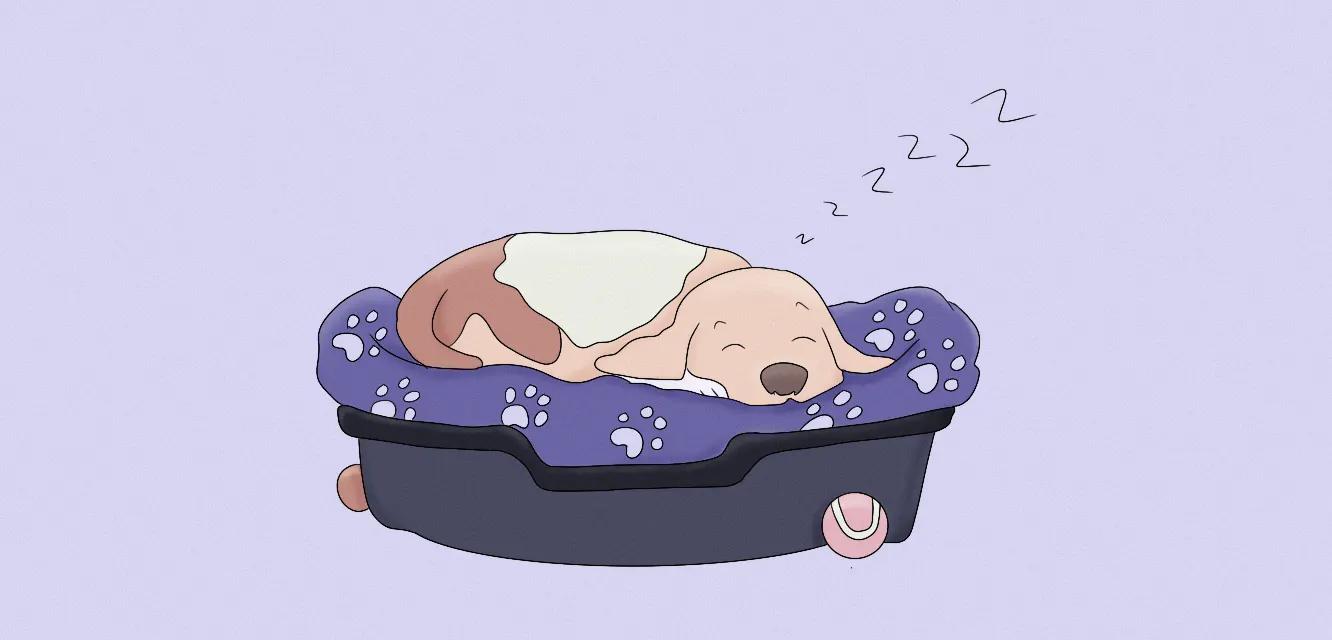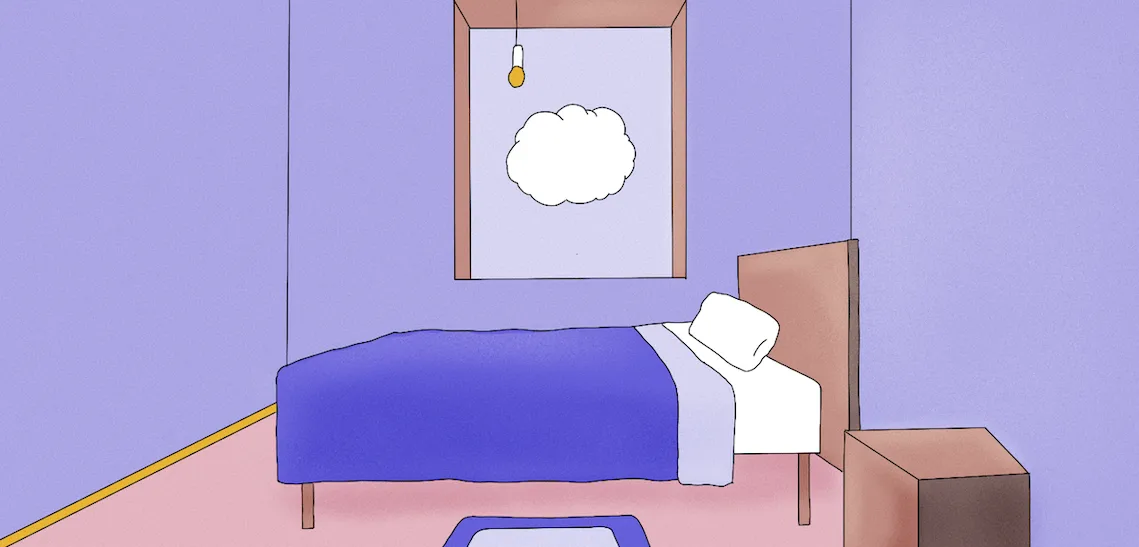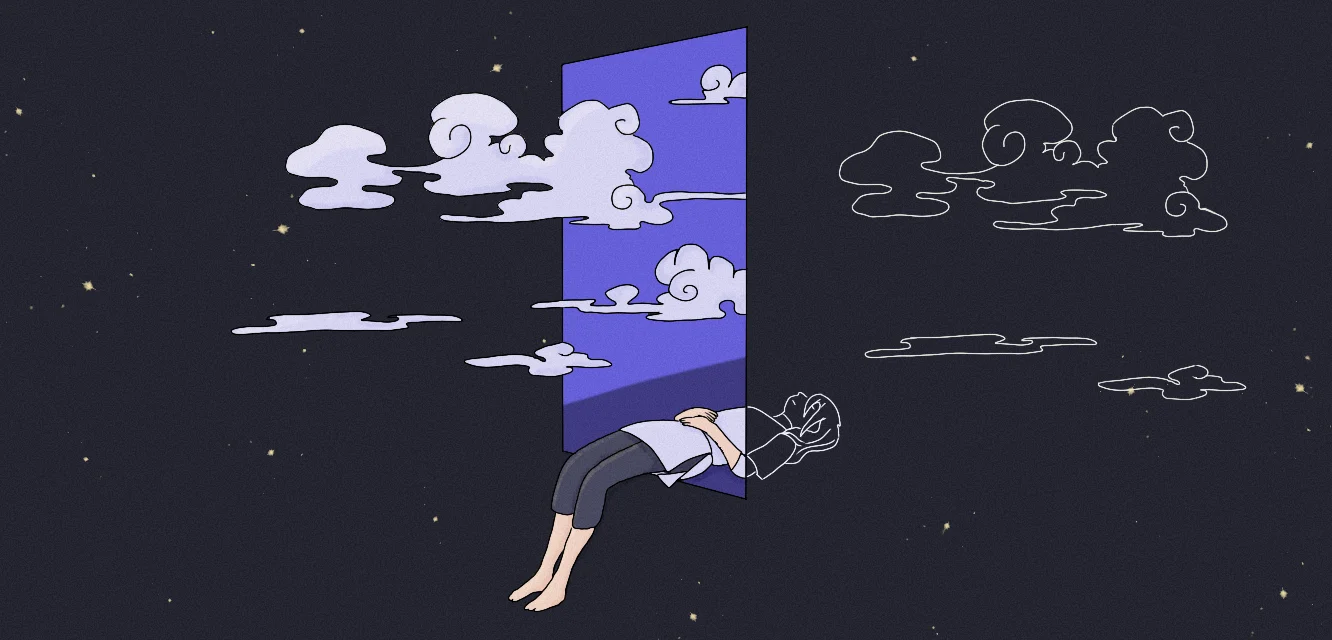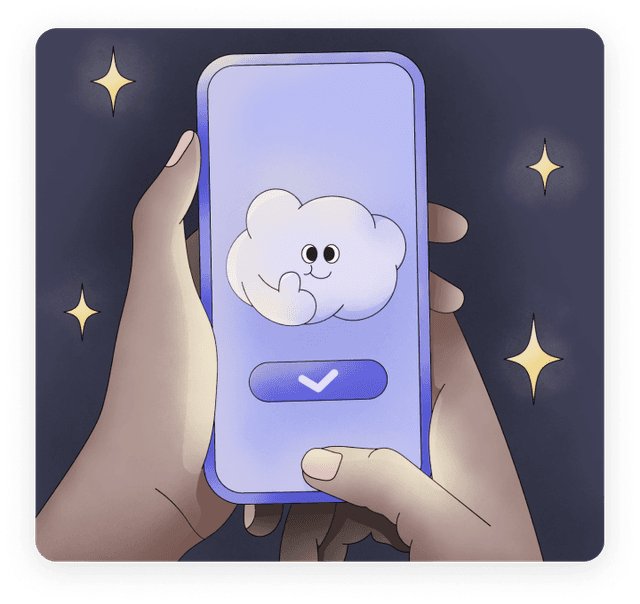
Denys Chumak
28 Aug 2023
What Your Dog Dream About?
1. Introduction
Have you ever wondered what your furry best friend is dreaming about when they start twitching or whimpering in their sleep? As their paws paddle the air and their tail wags, are they chasing rabbits in their dreams or playing with other puppies? While we may never truly know what visions dance through a dog's mind during REM sleep, scientists and animal behaviourists have some pretty good theories.
Do dog have dreams? Read on to uncover the mysteries behind dog dreams and gain some insight into your pup's nighttime adventures. Who knows, you may even pick up a few tips to help comfort them after a bad dream and ensure sweet dreams are had by all.
2. Do Dog Have Dreams? Exploring the Science Behind Dog Dreams
Do dogs dream? Science says yes. While we can't know exactly what our canine companions are dreaming about, researchers have found that dogs experience the same types of REM sleep and brain wave activity as humans, suggesting they do, in fact, dream.
As you drift off to sleep at night, your dog curled up at the foot of your bed also enters into a sleeping state. Their breathing becomes deeper and more regular as their body relaxes. After about 20 minutes, their eyes will start darting back and forth under their eyelids, and their paws may twitch - signs they've entered REM sleep, the stage where dreaming occurs.
In dogs, REM sleep makes up about 10% of their total sleep time, slightly less than in humans. But neurological studies show that in REM sleep, dogs' brains show similar arousal and eye movement patterns as humans, indicating they are likely dreaming.
So what do dogs dream about? We can only speculate. Perhaps they are dreaming about common dog activities like chasing squirrels, getting belly rubs, or playing with their favourite toy. Or maybe they are reliving memories of adventures with their owners or processing the events of the day. Some scientists believe dogs may even have nightmares, as we often see them whimpering, growling or twitching in their sleep.
While we may never know exactly what visions fill our dogs' dreams, we do know that, just like us, they need sleep to rest their body and mind. Sweet dreams, furry friends! We hope your dreams are filled with tails of fun, exciting escapades and lots of treats.
3. Common Themes in Dog Dreams: Chasing, Playing and Sniffing
Dogs dream just like humans do. While we may never know exactly what they're dreaming about, research suggests certain common themes.
One is chasing - either prey they hunt or toys they play with. Many dogs will make running motions or kick their legs while sleeping as if chasing something in their dream. It's likely they're reliving some exciting activity from earlier in the day or in their memory.
Playing also seems to be a frequent subject of dogs dreams. Some dogs will wag their tails, bark softly, or make other sounds that indicate they're having a good time in their dream. They may be dreaming of playing with their favourite human or another dog.
Finally, dogs are ruled in large part by their sense of smell, so it's probable that many of their dreams incorporate sniffing and exploring with their noses. They may dream of investigating new smells in the neighbourhood or in familiar places they frequent.
Of course, some evidence points to dogs also having nightmares on occasion. Anxious or fearful dogs, in particular, may show signs of distress during sleep, such as whimpering, growling or shaking. They could be reliving a scary experience or situation.
While a dog's inner dream world remains mostly a mystery, observing them during sleep gives us a glimpse into what they may be imagining. Sweet dreams, furry friends! We hope they're filled with play, adventure, and lots of treats.
4. Do Dogs Have Nightmares? How to Tell if Your Dog Has a Bad Dream
Do dogs experience nightmares as humans do? It's hard to know for sure, but some signs point to the possibility. Have you ever noticed your dog twitching, whimpering or moving its paws while sleeping? These could be indications your pup is having an unpleasant dream.
A. Body movements
Dogs in the middle of a bad dream may make paddling motions with their paws, twitch their body or even whimper. These movements and sounds seem to indicate they are dreaming of an unpleasant situation they want to run or chase away from. Yelping or crying during sleep could also point to a scary dream.
B. Expressions
Watch your dog's face during sleep. Their expression may appear tense, worried or distressed, suggesting an unpleasant dream state. Ears pulled back, bared teeth or a furrowed brow can all be subtle clues your dog is experiencing a nightmare.
C. Waking suddenly
If your dog wakes up suddenly from sleep with a start, cries or howls, that could indicate they were in the middle of a nightmare. The fear and anxiety from the bad dream likely caused them to wake in distress. Gently petting, rubbing and speaking softly to your dog after they wake from a nightmare can be comforting.
It's important not to wake your dog during a nightmare, as this could startle them. However, some owners have found success in using a soft, reassuring tone to gently call the dog's name, which may help shift them into a more pleasant dream state.
While we can't know for sure if dogs dream or what they dream about, it seems that, like humans, dogs, too, can suffer from the occasional nightmare scare. With your care, affection and comfort, you can help chase those bad dreams away.
5. What Do Dog Dreams Mean? Interpreting the Meaning Behind Your Dog's Dreams
As your dog snoozes next to you, their paws twitch and they make little yipping sounds—it's clear they're dreaming. But what are they dreaming about? Here are some possibilities:
A. Their Favorite Activities
It's likely your dog dreaming about things they enjoy in their waking life, like:
Playing fetch or going for walks. The parts of the brain that activate when dogs are awake and doing an activity also activate when they dream about it. Interacting with you. Dogs are pack animals, so they probably dream about bonding with their owners and families.
B. Everyday Experiences
Dogs also dream about mundane events from their daily lives:
Eating or drinking. As in humans, basic biological needs and sensations often appear in dreams. Guarding the house or yard. For dogs with a strong protective instinct, they may dream about patrolling their territory.
C. Exaggerated Fantasy
Some dreams may be exaggerated fantasy versions of normal events:
Chasing small animals or other prey. The chase instinct emerges in an exaggerated form. Playing with other dogs. Dream play may be more frenetic and uninhibited than in real life.
While we can't know definitively what our dogs dream about, their dreams likely reflect a mix of memories, experiences, and instincts from their everyday lives—spun into a fantasy where anything is possible, and they can freely run, chase, play, and interact without boundaries. Sweet dreams, furry friends!
6. How to Help Your Dog Have Pleasant Dreams: Tips for Better Sleep
As your dog slumbers, its paws twitch and tails wag—it's clear they're deep in dreamland. While we can't know exactly what they're dreaming about, we can take some steps to promote pleasant dreams for our canine companions.
A. Stick to a routine
Dogs are creatures of habit and thrive on routine. Establish a regular feeding, walking, and bedtime schedule for your dog. Going to bed and waking up at the same time every day helps set their circadian rhythm and leads to better quality sleep and dreams.
B. Provide a comfortable space
Give your dog its own space to sleep that is cosy and peaceful. Place their bed in an area away from loud noises so they can relax into a deep sleep. Having their own space where they feel secure will allow them to dream without disturbance.
C. Limit stimulation before bed
Avoid rough play, long walks, or big meals for 1-2 hours before bedtime. While exercise is important during the day, excitement close to bedtime may make it harder for your dog to fall asleep and stay asleep. Sticking to a calming pre-bed routine will help your dog transition to sleep and encourage good dreams.
D. Reassure your dog
If your dog seems distressed in their sleep or wakes up abruptly, gently reassure them. Speak in a soft, soothing tone and pet them gently. Your calm presence and affection will help reassure them, allowing them to go back to sleep peacefully. Pleasant interactions with you during the day also help your dog feel safe to dream at night.
Providing your dog with what they need for a good night's rest—a familiar routine, comfortable space, limited stimulation, and your reassurance—will promote dreaming in a pawsitive way. Sweet dreams, furry friend!
7. Conclusion
The fascinating world of dogs dreams is now more accessible than ever, thanks to the DreamApp. It's amazing to think that our furry friends have their own unique dream experiences. Whether they're chasing squirrels, playing fetch, or simply enjoying a belly rub, the DreamApp allows us to peek into their subconscious adventures. Understanding what dogs dream about deepens our bond with them and gives us a glimpse into their inner lives. So, next time you see your pup twitching or wagging their tail in their sleep, remember that they're likely embarking on a whimsical dream journey of their own.
8. Frequently Asked Questions
What do dogs dream about?
Dogs dream about a variety of things, such as chasing toys, playing with other dogs, reliving past experiences, or simply enjoying pleasant sensations.
Can dogs have nightmares?
Yes, dogs can have nightmares, just like humans. They may experience fear, anxiety, or distress in their dreams, often accompanied by whining, whimpering, or movements.
Do all dogs dream the same things?
No, dogs' dreams vary based on their individual experiences and preferences. Each dog's dreams reflect their unique memories, activities, and interactions with the world around them.
Are puppies more prone to dreaming?
Yes, puppies and younger dogs tend to dream more frequently than older dogs. Their active and exploratory lifestyles contribute to a higher frequency of dream episodes.
Can I influence my dog's dreams?
While you can't directly control or influence your dog's dreams, creating a positive and stimulating environment with plenty of exercise, playtime, and social interaction can contribute to more vivid and enjoyable dream experiences for your furry friend.
Did you have an unusual dream with this symbol?
Let's analyze this dream with our expert!
At least five words, please.

Your dreams are completely private
Take control of your dream emotions in the free mobile app



The most recent users' dreams
Go to the user dreams page
Dream App
Free dream interpretations

(1,213)











